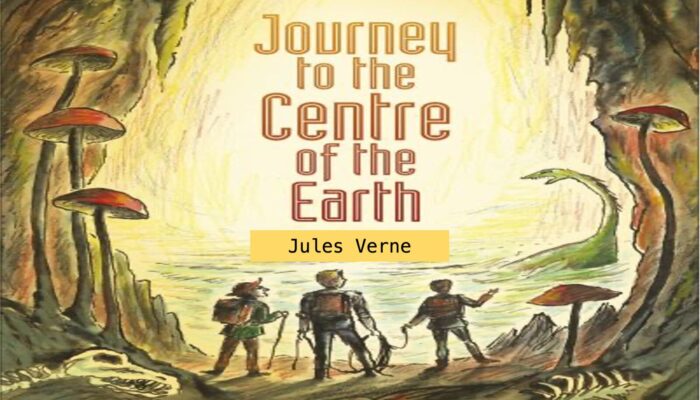
Geophysicists have long been intrigued by the enigmatic “blobs” residing deep within Earth’s lower mantle — the Large Low-Velocity Provinces (LLVPs). Ever wondered what keeps these gigantic thermochemical structures surviving for billions of years despite the mantle’s vigorous convection? In this week’s News & Views, Prachi Kar, a PhD candidate from Arizona State University, delves into Earth’s deep interior to explore how an intrinsically dense, basal layer may hold the key to the long-term survival of these blob-like structures at the core-mantle boundary.
I was in elementary school when one day my mom handed me a book with a title: Journey to the Centre of the Earth. I didn’t know what was inside, but that name sounded epic. I immediately started reading, and before I knew it, I was tagging along with the explorers, dinosaurs, lava tubes – the whole underground circus. What I definitely didn’t know back then was that my own PhD would turn out to be its own version of “Journey towards the Centre of the Earth.” Thankfully, in my case, no dinosaurs and no dramatic lava slides. Instead, I got something even stranger: traveling through Earth’s deep interior with mathematics, equations, simulations, and models, trying to solve the mystery of giant blobs at the bottom of the mantle. Sounds bizarre, right? Well, buckle up, because I’m offering you a free and warm ride with me.
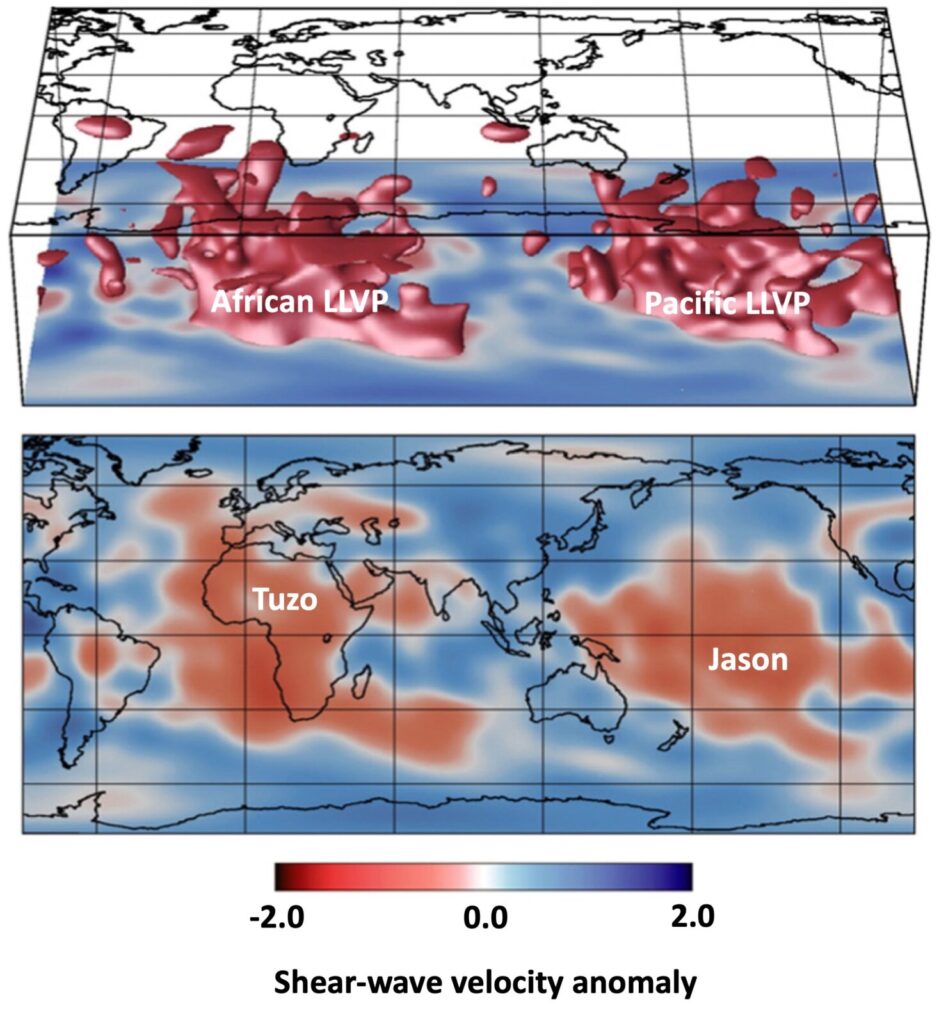
Figure 1: LLVPs are regions of anomalously low seismic shear-wave velocity in the lowermost mantle, located beneath Africa (Tuzo) and the Pacific Ocean (Jason).
Deep beneath our feet, two gigantic blob-like structures lie hidden under the Pacific Ocean and Africa in Earth’s lowermost mantle (Garnero & McNamara, 2008). Of course, we cannot just dive into a volcano to see them, so scientists use seismic waves from earthquakes, Earth’s own CT scan, to look inside. These waves slow down near the core-mantle boundary (CMB), revealing two massive structures. They are hundreds of kilometers tall and cover nearly half of the CMB. These structures are commonly known as Large Low Velocity Provinces or LLVPs in short (Figure 1). LLVPs differ from the surrounding mantle, showing slower seismic wave speeds, suggesting a unique composition or temperature. They also influence how heat escapes from the core and where mantle plumes form, thus driving surface volcanism, hot spots, and massive eruptions like large igneous provinces (LIPs). In short, these deep-Earth blobs are the hidden engines behind some of the Earth’s most dramatic geological activity.
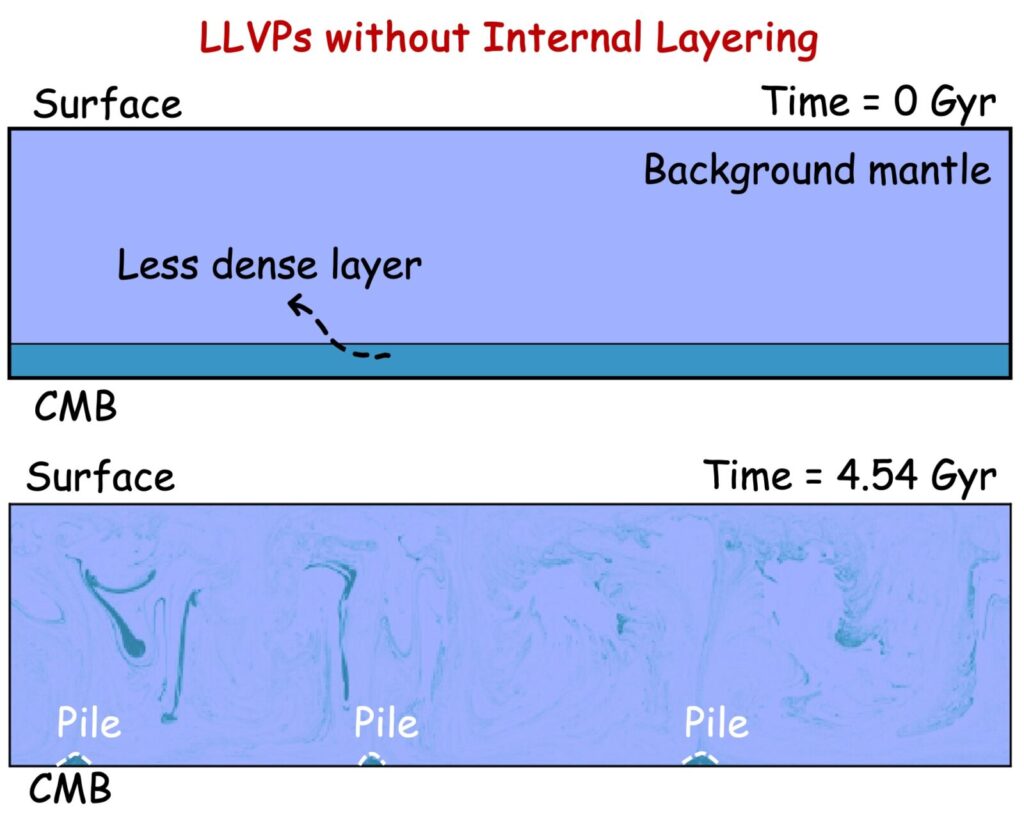
Figure 2: LLVPs without a basal dense layer do not survive for a long time. Most of the pile materials are entrained and mixed with the background mantle by convective flows. Image credit: Prachi Kar
One of the biggest mysteries about these blobs or piles is how they have managed to survive for billions of years. Because the slow churning of Earth’s mantle by convection currents would have mixed everything up like soup. But nope, the LLVPs have held their ground. Scientists think their secret might lie in their density. If the blobs are heavier than the surrounding mantle, they would be more stable and anchored to the CMB. But if they are lighter, they would be buoyant and want to rise with the convection currents. Now, here’s where things get tricky. Different studies tell slightly different stories about the density of LLVPs. Some evidence, based on gravity measurements and certain seismic observations, suggests that LLVPs are about 1% denser than the surrounding mantle (Ishii and Tromp, 1999; Moulik and Ekström, 2016), helping them survive over geologic time. Other studies, however, using different types of seismic waves, propose the opposite – that LLVPs could be lighter and more buoyant (Koelemeijer et al., 2017), potentially rising upward and feeding deep mantle plumes that drive volcanic activity at the surface. More recent research, including analyses of Earth’s tides from high-precision GPS data, adds another twist: LLVPs might not be uniform in density at all, but instead have a denser base and a lighter top (Lau et al., 2017).
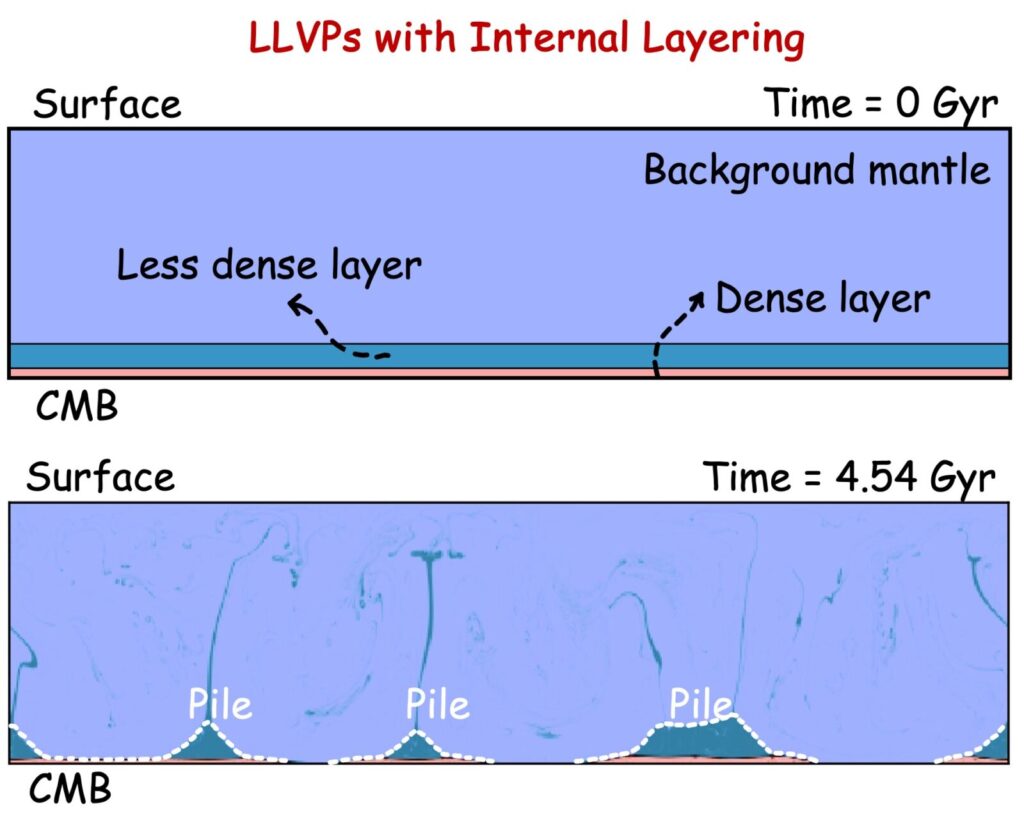
Figure 3: LLVPs with a basal dense layer resist entrainment and mixing by mantle convection, allowing them to persist over timescales comparable to Earth’s history. Image credit: Prachi Kar
As a geodynamicist, I found this puzzle fascinating and turned to one of our most powerful tools – numerical modeling. Using supercomputers, I simulate how LLVPs evolve deep within Earth to explore their density structures to explain the long-term survival of these mysterious blobs. Our models suggest that the key is hidden at their base. If there’s a thin, intrinsically dense (without considering the temperature effect) layer sitting at the bottom of these piles, it could survive for billions of years, a timescale comparable to Earth’s, even if the layers above are much lighter. We found that the thicker, denser, and more viscous this basal layer is, the more stable the entire structure becomes. Interestingly, this dense base also seems to shield the upper part of the LLVPs from direct heating by the core, keeping them slightly cooler and therefore relatively denser than the surrounding mantle at the ambient pressure-temperature (P-T) condition. The basal layer may even slow down the convective flow that would otherwise erode them over time, thereby reducing the entrainment and mixing of LLVP materials. Altogether, our results show that a thin, dense basal layer could be the key to preserving the thermochemical identity of these deep-Earth giants throughout our planet’s history.
And that’s where our journey through the interior of our planet ends, for now! If you’re curious to dig deeper into the long-term survival of these mysterious structures, feel free to check out my recent research here.
References: Garnero, E. J., & McNamara, A. K. (2008). Structure and dynamics of Earth's lower mantle. science, 320(5876), 626-628. Ishii, M., & Tromp, J. (1999). Normal-mode and free-air gravity constraints on lateral variations in velocity and density of Earth's mantle. Science, 285(5431), 1231-1236.\ Kar, P., & Li, M. (2025). Long-term survival of large low velocity provinces (LLVPs) due to internal layering. Physics of the Earth and Planetary Interiors, 107452. Koelemeijer, P., Deuss, A., & Ritsema, J. (2017). Density structure of Earth’s lowermost mantle from Stoneley mode splitting observations. Nature Communications, 8(1), 15241. Lau, H. C., Mitrovica, J. X., Davis, J. L., Tromp, J., Yang, H. Y., & Al-Attar, D. (2017). Tidal tomography constrains Earth’s deep-mantle buoyancy. Nature, 551(7680), 321-326. Moulik, P., & Ekström, G. (2016). The relationships between large‐scale variations in shear velocity, density, and compressional velocity in the Earth's mantle. Journal of Geophysical Research: Solid Earth, 121(4), 2737-2771.


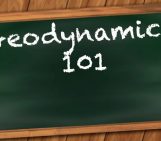

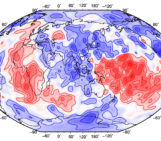
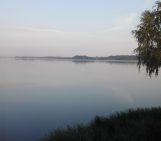
RobotBoy76
Like you, I had a childhood fascination with ‘Journey to the Centre of the Earth’, and after reading the book, went on to watch the film and cartoon versions. Your research brings an new level of detail to LLVPs and it seems that we’re moving closer to how these structures affect various aspects of vulcanism across the world. I’ll be reading here regularly from now on. This Tom Wait’s song is the perfect theme for this topic:
https://www.youtube.com/watch?v=mfAB2AR_93k